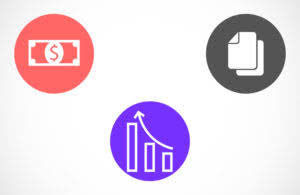If the anticipated revenue is less than the anticipated expenses, the budget is considered to be in deficit. Like every other democracy in the world, India’s budget has typically been in deficit. When the budget reaches the House of Representatives, it is distributed among the subcommittees of the Appropriations Committee.
The program budget, in contrast, attempts to assign expenditures to specific outputs, categorizing them according to numbers of children completing various programs. Researchers use federal revenue and spending data to better understand the gaps in each state’s balance of payments with the Federal government. Policymakers use this information to see if their current and proposed funding allocations are fair, appropriate and will achieve policy goals, the report stated.
- The more need there is to increase saving, the smaller should be the amount of government borrowing.
- It outlines how much money the government expects to collect (revenue) and how much it plans to spend over a specific period, usually one year.
- Revenue Deficit is the excess of government’s revenue expenditure over its revenue receipts.
- Instead, Senate Republicans are considering offsets mostly for any new Trump tax breaks.
- The secretary of agriculture, for example, may have a relationship with the agricultural committees of Congress that is closer than his relationship with the president.
The budget also divides authorized expenditure into that which can be carried out without action by Congress and that which requires further authorization. In any year, about half of federal expenditure requires authorization from Congress; by withholding this authorization, Congress is able to force changes in the government’s budgetary policy. The budget also summarizes the outstanding debt of the federal government and estimates the size of the surplus or deficit expected on the basis of the revenue and expenditure projected in the budget. Other items may be included in the budget on a net rather than a gross basis. For instance, the total receipts and expenditures of the post office or other commercial activities of the public sector usually do not appear; only the deficit or surplus does. This is justified by the theory that, first, business management is not well performed by legislative committees and, second, that so long as a business undertaking pays its way, its conduct is not a matter of public concern.
What are the three types of government budgets?
A simple examination of expenditures does not do justice to the complex relationships between the federal government and the states and localities. In some cases, the federal government pays16 for a program and gives broad discretion to the states as to how to carry out the mandate. In other cases, the federal government essentially dictates all the terms, and the states simply administer the program. While House Republicans approved their package with $4.5 trillion in tax breaks and up to $2 trillion in spending cuts, the Senate Republicans are taking a different tack. Fundamental to the Senate package is making sure Trump’s first-term tax cuts, which are set to expire at the end of the year, are continued and made a permanent fixture of the tax code. The senators also will consider adding Trump’s proposed tax cuts on tipped wages, Social Security income and others.
Government versus private sector budgeting
Jefferson’s victory enabled Congress to assert its authority by making appropriations so highly specific as to hinder executive action. Had Hamilton won, the treasury would have attained extraordinary power in relation both to Congress and to the president. Instead, Senate Republicans are considering offsets mostly for any new Trump tax breaks. Raising alarms from the most conservative budget hawks, the senators have set a floor of about $4 billion in budget reductions to health and other programs — a fraction of the package’s expected $4 trillion-plus price tag for tax breaks. What’s unclear is how it will all be paid for, since Republican deficit hawks typically require spending offsets to help defray the lost tax revenue and avoid piling onto the nation’s $36 trillion debt load.
The accounting functions of the budget
The government can immediately take on production in specific domains where the attention is needed if the private sector does not show interest, ensuring supply as well as the welfare of the populace. Government budgeting is the estimates of the government receipts and expenditure. Read all about Government Budgeting, Meaning, Objective, Types and Components for UPSC Exam. When government expenditure is greater than government revenue, it is called Surplus Budget.
Resource allocation ensures that limited government funds are distributed effectively across sectors like welfare, public services, and infrastructure. Government budget is a statement of the estimates of the government receipts and government expenditure during the period of the financial year. The budget is designed types of government budget to include a number of provisions for funding and operating public sector businesses.
Program budgeting and zero-base budgeting
- Similarly, the congressional committees are able to exert some influence on the budget during its preparation.
- For centuries Parliament seemed content to restrict the amounts that the sovereign levied while letting him spend the money as he pleased.
- Since 2021, enhanced premium tax credits have lowered premium payments across all subsidized enrollees and made middle income people (over four times poverty) newly eligible for subsidies.
- This variation reflects different national decisions concerning the proportion of a nation’s activity deemed most appropriate to have carried out by the various levels of government or by government agencies.
- Taxation is used not only to raise revenue but also to redistribute income and to encourage or discourage certain activities.
Massachusetts and Washington are among the states paying the highest federal taxes per capita. The report found that Maryland and Virginia have a large balance of payments per capita. Government budget can be of three types those are, balanced budget, Deficit budget and Capital Budget. It will increase the standard of living for the poor while decreasing the income of the wealthy. The government makes sure that wealth is distributed fairly through this procedure as well. The goal must be equitable progress instead of just economic success, which is not a sufficient objective.
Government Budgeting in India
For example, educational services enable citizens to improve their knowledge and skills. For example, the government adopts a budget deficit to stimulate economic growth through lower taxes and greater spending, such as on infrastructure. As well as affecting the overall economy, the budget may have significant (intended and unintended) effects in specific areas. Taxes affect incentives to work or to consume, while taxes, benefits, and expenditures all affect the distribution of income.
For this reason, distinctions between current and capital expenditures in public accounts are often viewed with suspicion. In Europe public expenditure was both larger (as a share of national income) and more centralized during this same time. Although most revenue is raised centrally in the United Kingdom, administration of many programs is carried out at local levels, partly financed by a local property tax and partly through grants from the central government. Local authorities are usually regarded as separate decision-making units, but the role of central government as a provider of finance that sets rules and imposes penalties has become dominant. In the United States in the late 20th century, between 25 and 30 percent of the federal budget was being spent on defense and a similar amount on social security and Medicare payments. Only a fairly small proportion of the federal budget was spent on other items, with about 10 percent of the overall budget being devoted to the salaries and other remuneration of federal civilian employees.
Budget, usually presented in March, is mainly concerned with taxation and is represented in a separate volume entitled Financial Statement and Budget Report. In order to deal with the increasing complexity of government’s role, most countries have experimented with a variety of forms for the budget and its presentation. Among the more important of these are the administrative budget, the current and capital budget, program and zero-base budgeting, and the full-employment budget. The variety of budgeting methods is extended to the types of efficiency measures used to increase value for money and to the alternative methods of projecting expenditures in cash, volume, and cost terms.
Although amendments to the budget are usually minor, the influence of Congress is not negligible. The prospect of facing Congress is a sobering one to the officers of government; congressional committees often strongly influence departmental budget recommendations. The secretary of agriculture, for example, may have a relationship with the agricultural committees of Congress that is closer than his relationship with the president. This situation is an opportunity for businesses to increase output and recruit workers. Eventually, the economy grows higher, unemployment lowers, and inflation rises. For example, the government budget provides subsidies and other incentives to encourage businesses to invest in environmentally friendly technologies.
Meanwhile, indirect taxes are levied on expenditures for goods and services. Fourth, the government redistributes income and wealth in the economy to citizens through its spending. For example, the government provides food stamps, unemployment compensation, housing assistance, and childcare assistance to those who are entitled.







